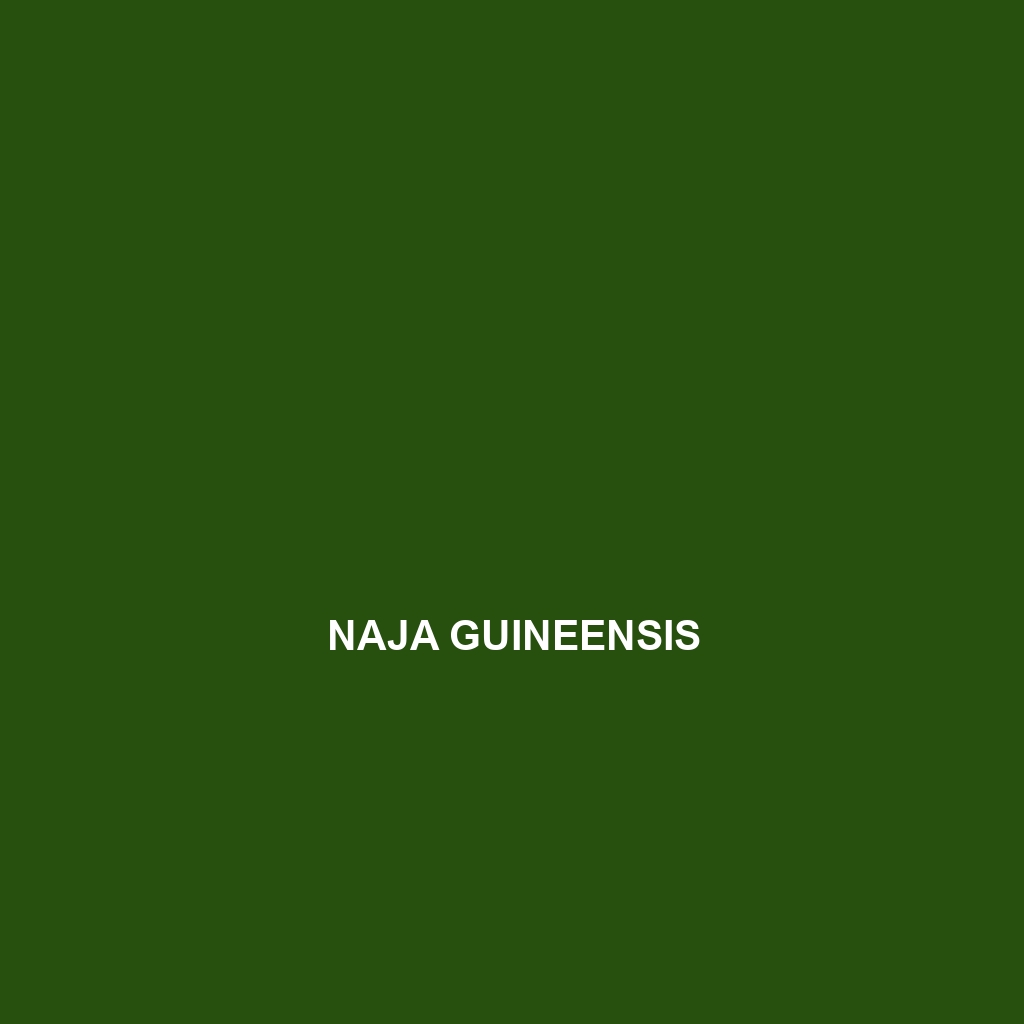Common Name
Naja guineensis, commonly known as the West African Cobra, is a species of snake that is renowned for both its distinctive appearance and its ecological significance.
Scientific Name
Naja guineensis
Habitat
Naja guineensis primarily inhabits areas across West Africa, including countries such as Ghana, Nigeria, and Ivory Coast. These snakes are often found in diverse environments ranging from rainforests to savannas and even temperate forests. They prefer habitats close to water sources, such as rivers and marshlands, which support their dietary needs and provide suitable areas for hunting. The climate of these regions can vary from humid and tropical to drier savanna conditions, enabling the West African Cobra to adapt to a variety of ecological settings.
Physical Characteristics
The Naja guineensis exhibits a range of physical characteristics that make it easily recognizable. Adult cobras typically attain lengths between 1.5 to 2 meters (approximately 5 to 6.5 feet), although some may grow larger. Their bodies are elongated and slender, characterized by a flat, triangular head. One of the most notable features is their hood; when threatened, Naja guineensis can expand this hood to appear larger and more intimidating. The coloration varies, often presenting shades of brown, gray, or olive green, with lighter markings that provide camouflage against the forest floor. Its unique visuals are not only integral to its survival but also a point of interest for herpetologists and snake enthusiasts alike.
Behavior
Naja guineensis exhibits fascinating behavioral traits. This species is primarily nocturnal, meaning it is most active during the night, which helps it avoid daytime predators and capitalize on its hunting opportunities. The snakes display a range of social interactions, particularly during mating season when males engage in complex courtship rituals that may involve displays of aggression. These interactions can include head bobbing and body flattening to assert dominance. Furthermore, these cobras are known for their defensive postures; when threatened, they will stand their ground and display their hoods as a warning to potential predators.
Diet
The dietary habits of Naja guineensis classify it primarily as a carnivore. Their diet mainly consists of small mammals, birds, and amphibians. They are skilled at hunting, relying on both visual cues and heat detection to locate warm-blooded prey. Often, these snakes employ a strategy of stealth, approaching their prey with caution before striking quickly with their potent venom. This feeding behavior is not only crucial for their survival but also plays a role in controlling the populations of their prey species in their ecosystems.
Reproduction
The reproductive cycle of Naja guineensis begins in the spring, coinciding with the rainy season in their habitats. Mating occurs shortly after the males assert dominance and attract females. The gestation period lasts approximately two to three months, after which females lay between 15 to 30 eggs. These eggs are usually deposited in concealed areas, providing some degree of protection from potential predators. Baby cobras emerge after about 60 to 90 days, fully equipped with their venom from birth, which allows them to fend for themselves almost immediately. Parental care is minimal, a characteristic common among many snake species.
Conservation Status
According to the International Union for Conservation of Nature (IUCN), Naja guineensis is currently listed as Least Concern. However, habitat destruction and human encroachment continue to pose significant threats to their populations. Conservation efforts focusing on habitat preservation and reducing human-wildlife conflict are essential to maintain stable populations of this species. It is crucial to raise awareness about the ecological role of cobras in their habitats and the need for sustainable interactions with their environments.
Interesting Facts
One particularly interesting fact about Naja guineensis is its ability to adapt its behavior based on environmental conditions; for instance, they may become less active during particularly harsh weather. Furthermore, these cobras possess a unique capacity to deliver a highly neurotoxic venom that can incapacitate their prey almost instantly. This remarkable adaptation highlights their evolutionary advantages and contributes to their status as one of the key predators in their environment. Additionally, their impressive display behavior when threatened not only showcases their beauty but also serves as a fascinating subject of study in animal behavior.
Role in Ecosystem
Naja guineensis plays a pivotal role in its ecosystem as both a predator and a prey species. By controlling the populations of smaller mammals and other fauna, these cobras contribute to the balance of their habitats. Furthermore, their presence in the food web supports various other species, including larger predators that rely on them as a food source. As such, the West African Cobra can be considered a keystone species, vital for maintaining the ecological integrity of their environments. This interdependence underscores the importance of conserving their populations and habitats.
